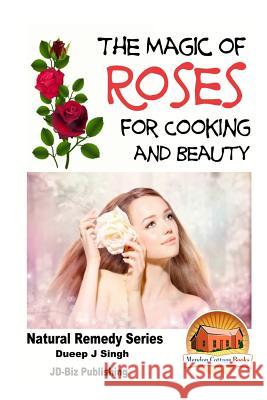The Magic of Roses For Cooking and Beauty » książka
The Magic of Roses For Cooking and Beauty
ISBN-13: 9781518771590 / Angielski / Miękka / 2015 / 52 str.
The Magic of Roses For Cooking and Beauty The Magic of Roses for Cooking and Beauty Table of contents Interested facts about roses Symbolism of Roses How To Grow Roses Roses in Cooking Rose water Gulkand( Gulqand) Recipe -Rose Jam Rose sherbet Rose sherbet Lassi-buttermilk Rose almond rice pudding Roses for Beauty Oil infusion- The slow sun method. How to make Desi Ghee (clarified butter) Quick kitchen Method Method two for essential oils Simple perfumed ointments Conclusion How to make a rose and lavender potpourri Author Bio Interested facts about Roses "A rose by any other name is still going to smell the same" so the Bard said. That is because the symbolism of the rose has been passed down through the ages since Classical Times. The word "rose" is still used to express the color pink or red in Greek, French, Italian, Portuguese, Spanish and Romanian - the Romance languages. It is believed that this woody perennial originated in Asia, and there were 160 species, which grew in number, thanks to the Empress Josephine's interest in collecting one example of all the existing roses from 1815 to 1830. It is thanks to her that the interest in hybridization of roses began to grow in France, and from there, it spread to the rest of Europe. As hybridization of roses is an easy process, those 160 species grew up into 6000 species of roses of cultivars and hybrids. Prevost and Pepinieriste wrote down 880 names of different rose species in their Rose catalog. But other rose species, which were native to northwest Africa and North America were already being in use for medical purposes, cooking purposes, beautification purposes, and also as symbols, since ancient and medieval times. The idea of My Love Is like a Red Red Rose has been en vogue for centuries. Why is this so, because a rose is normally accompanied with "thorns" which were a defensive protective epidermal outgrowths. The original roses or creepers, and they managed to cling to plants with the help of these thorns. The idea of Roses for love have come down the millenniums as from the classical times when the rose was associated and identified with Venus - Aphrodite.
Zawartość książki może nie spełniać oczekiwań – reklamacje nie obejmują treści, która mogła nie być redakcyjnie ani merytorycznie opracowana.











